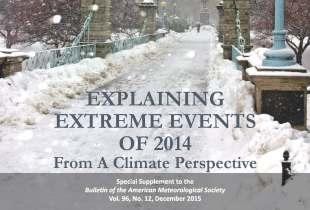The Contribution of Human-Induced Climate Change to the Drought of 2014 in Southern Levant Region

Publication type:
Journal
Year:
2015
Page No.:
S66
Volume/Chapter/Issue:
96
Abstract:
While the extent to which the 2007/08 drought in the Levant region destabilized the Syrian government continues to be debated, there is no questioning the enormous toll this extreme event took on the region’s population. The movement of refugees from both the drought and war affected regions into Jordan and Lebanon ensured that the anomalously low precipitation in the winter of 2013/14 amplified impacts on already complex water and food provisions.
It is hypothesized that droughts over the Levant region can be linked to three types of synoptic regimes (Saaroni et al. 2014). The regimes include 1) an expansion of the subtropical high over the majority of the Mediterranean Basin, 2) a pronounced stagnant ridge/block, and 3) an intrusion of lower-level continental polar air. The 2014 drought, affecting parts of Jordan, Lebanon, Palestine, and Israel, was characterized by extremes in low rainfall, the extent of the long dry periods, and three exceptional rainfall events that interspersed these. The drought itself was thought to be due to a large-scale winter blocking event that prevented weather systems from reaching the region (Udasin 2014).
The motivation for this study is twofold: 1) due to the instability in the Levant region, stresses such as meteorological extremes can often lead to enhanced public and political tensions. 2) There is a clear bias in the literature for looking at extreme events over industrialized countries (e.g., Herring et al. 2014) - this study provides an example in an alternative geographic region.
Link:




